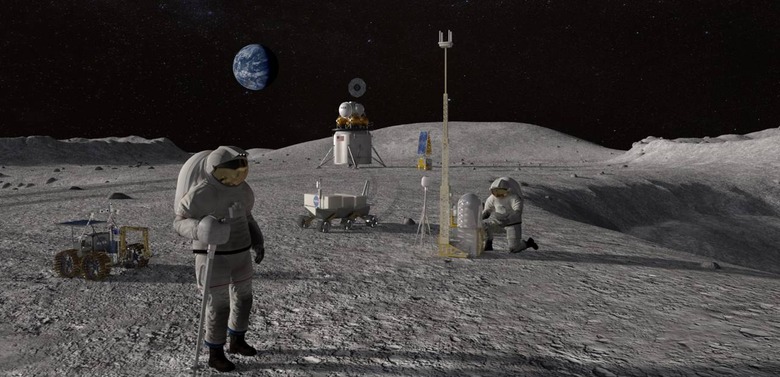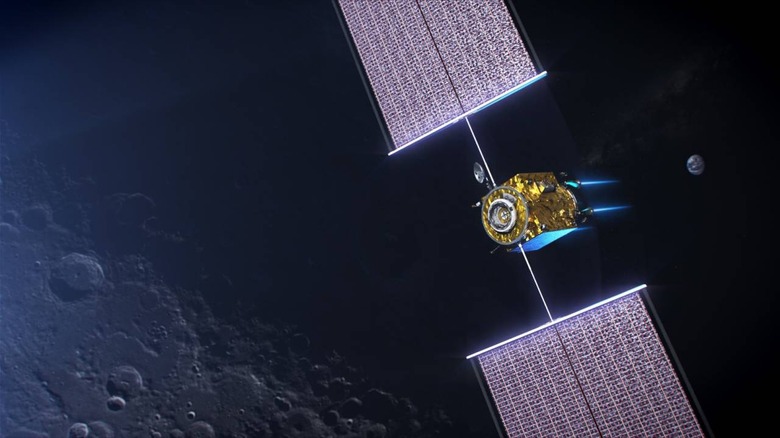NASA Chief Justifies Potential $30bn Moon 2024 Cost
NASA's ambitious "Artemis" mission to take American astronauts back to the moon will cost as much as $30 billion over the next half decade, the space agency's chief has confirmed. Administrator Jim Bridenstine also defended the Moon 2024 project over criticism that it was wasteful and could distract NASA from other scientific work.
It has been decades since an American astronaut walked on the surface of the moon, since the Apollo program in the 1960s and 70s and the race to beat the Soviet Union to the scientific milestone. Now, though, NASA is looking to Earth's satellite as a stepping stone to Mars, and exploration further afield in the solar system.
That sort of project doesn't come cheap. Unofficial estimates of just how much the Moon 2024 mission – dubbed "Artemis" – will cost taxpayers have circulated for some time now, and NASA itself has already requested $1.6 billion in funds for it. However Bridenstine concedes that's just a fraction of what it will take overall.

In total it could be anywhere from $20 billion to $30 billion, the Administrator told CNN Business. That's on top of other work NASA is doing, and would work out to roughly $4-6 billion per year extra. NASA's current budget works out on average to around $20 billion each year.
"We're negotiating within the administration," Bridenstein confirmed, acknowledging that even this new, broad range of potential costs could end up changing given the unpredictable nature of space exploration. The $1.6 billion already requested, he says, is a "downpayment" on the project.
Moon 2024's risks to other NASA projects
One of the concerns that may derail the negotiations – not only with the White House, but the lawmakers in Congress who must also sign onto the funding – is that "Artemis" could end up sabotaging other NASA work in its hunger for budget. Given how huge the Moon mission's proposed costs are compared to the overall NASA purse each year, that's not an unreasonable fear. Still, the Administrator says that it's not something he'll countenance.
"I will tell you my goal – and I've been very clear about this – is to make sure that we're not cannibalizing parts of NASA to fund the Artemis program," Bridenstine insisted. Meanwhile Artemis will tap into existing work already underway at NASA, such as the Space Launch System (SLS) rocket and the Orion spacecraft. While they have already been under development for years, they're also politically controversial given budget overruns and time delays.
A new mission, a new sustainable approach to space
NASA's argument is that, while the US may have been to the Moon before, "Artemis" will be a very different way of doing that. For a start, it will rely heavily on private industry and providers like SpaceX, Boeing, Blue Origin, and others. That, Bridenstine predicts, will put NASA into the position of being able to cherry-pick the best technology options without having to fund its development itself.

We've seen moves there in recent weeks, with NASA confirming that it would open up some of its capacity at the International Space Station for commercial use and even space tourism. While availability will still be small scale, it could be a lucrative new source of income for the agency. A single tourist trip to the ISS, for example, could cost anywhere in the region of $50 million.
"The reason we need commercial operators is because they can drive innovation if they're competing on cost and innovation," Bridenstine says. That will be instrumental in the development of key Moon 2024 hardware like the Lunar Gateway, which will be used as a staging position in orbit around the Moon. NASA also envisages it being a key component of the eventual manned mission to Mars.
That focus on making investments that are sustainable are a key difference from the Apollo missions and today, the NASA Administrator points out. Technology like the reusable rockets that SpaceX is already using successfully will help bring long-term costs down, while hardware like spacecraft intended for tourism could also help offset the cost of things like landers to take astronauts from the Lunar Gateway down to the surface of the Moon.
